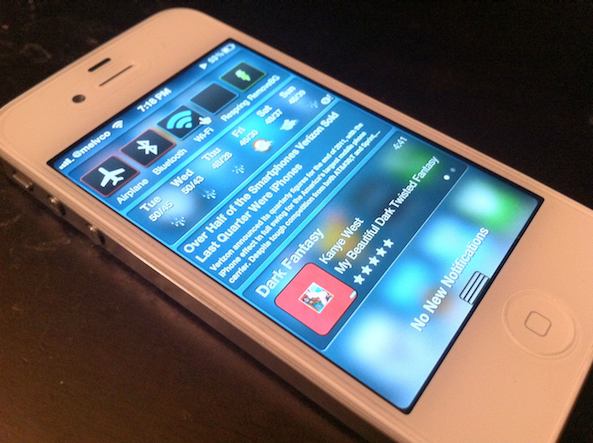I’ve always tinkered with my devices, regardless of their OS. I remember installing leaked versions of RIM’s OS 6 on my old BlackBerry Bold, and rooting my Android handsets to install the latest ROMs.
But out of all of those experiences, I can honestly say that hacking devices, customizing them and installing tweaks, is much easier to do on iOS than it is on any other platform — even the “open” Android…
Lifehacker’s Whitson Gordon — a long-time Android user — attests to this rather well in a recent article entitled “Forget Android: the iPhone Is a Better Phone for Hacking, Tweaking, and Customization.”
The entire piece is worth a read, but Gordon’s best point comes in the third paragraph when he starts talking about the complications of rooting (aka the jailbreaking of Android):
“But, when you really want to get down to tweaking the nitty-gritty, the fact of the matter is that rooting is what opens up real possibilities. Unfortunately, rooting is about as big of a headache as breaking into a bank vault with a safety pin. You have over 100 different Android phones out there, each with its own rooting method, caveats, and risks that you have to research. It’s so annoying that we had to turn our rooting guide into a guide for only the top 10 phones, in addition to tacking on an exhaustive glossary of all the crap you have to know before starting the process. Our jailbreak guide, on the other hand, is 3 steps long.”
That last line really sums it up. To jailbreak my iPhone 4S (or practically any other iOS device), all I need to do is plug it into my computer, launch Absinthe, and click the ‘jailbreak’ button. And it works on practically any device, and a number of firmwares.
And the problems with Android hacking don’t stop there:
“The headache doesn’t stop with rooting, either. Because Android has so many devices and so many different versions of itself floating around (the sad downside of open source), a lot of the tweaks you get are sadly specific to a certain device or ROM. Tweaks that work with Sense ROMs won’t work with AOSP ROMs, and Gingerbread tweaks probably won’t work with Ice Cream Sandwich-based ROMs.”
I’ll admit that this is an issue we run into on iOS (think tweaks that needed to be updated for iOS 5), but it’s on a much, much smaller scale. Most jailbreak developers are typically developing for the same set of devices and firmwares.
Gordon continues:
“Now, I’m the first guy to complain about how slow and annoying Cydia can be, but after coming from Android, I’ve realized that Cydia is the greatest thing to happen to us phone tweakers. Want to install an app, tweak or customization to your iPhone? Chances are pretty darn good you’ll find it among the thousands of apps and tweaks available in Cydia. Want to do the same on Android? Once you’ve narrowed down the tweaks that your device can actually use, you’ll have to root through forums like XDA Developers or RootzWiki for what you’re looking for, and then sideload it onto your phone via Dropbox or USB.”
Luckily, this is not something we run into on iOS. Cydia popped up in February of 2008, roughly 6 months after the first iOS jailbreak surfaced. And, as mentioned above, it’s been the go-to app store for underground apps and tweaks ever since.
You see, the “freedom” that Google touts of its mobile OS is also the platform’s achilles heel. With over 4,000 different Android devices in the wild, running a number of different OS versions, it’s no wonder the rooting community can’t keep up.
What does this all mean? It means that despite how “open” Android may be, I can buy an iOS device, and within 5 minutes be able to do more with it than I ever could with an Android one. And you have to admit, that’s kind of ironic.
Thoughts?
